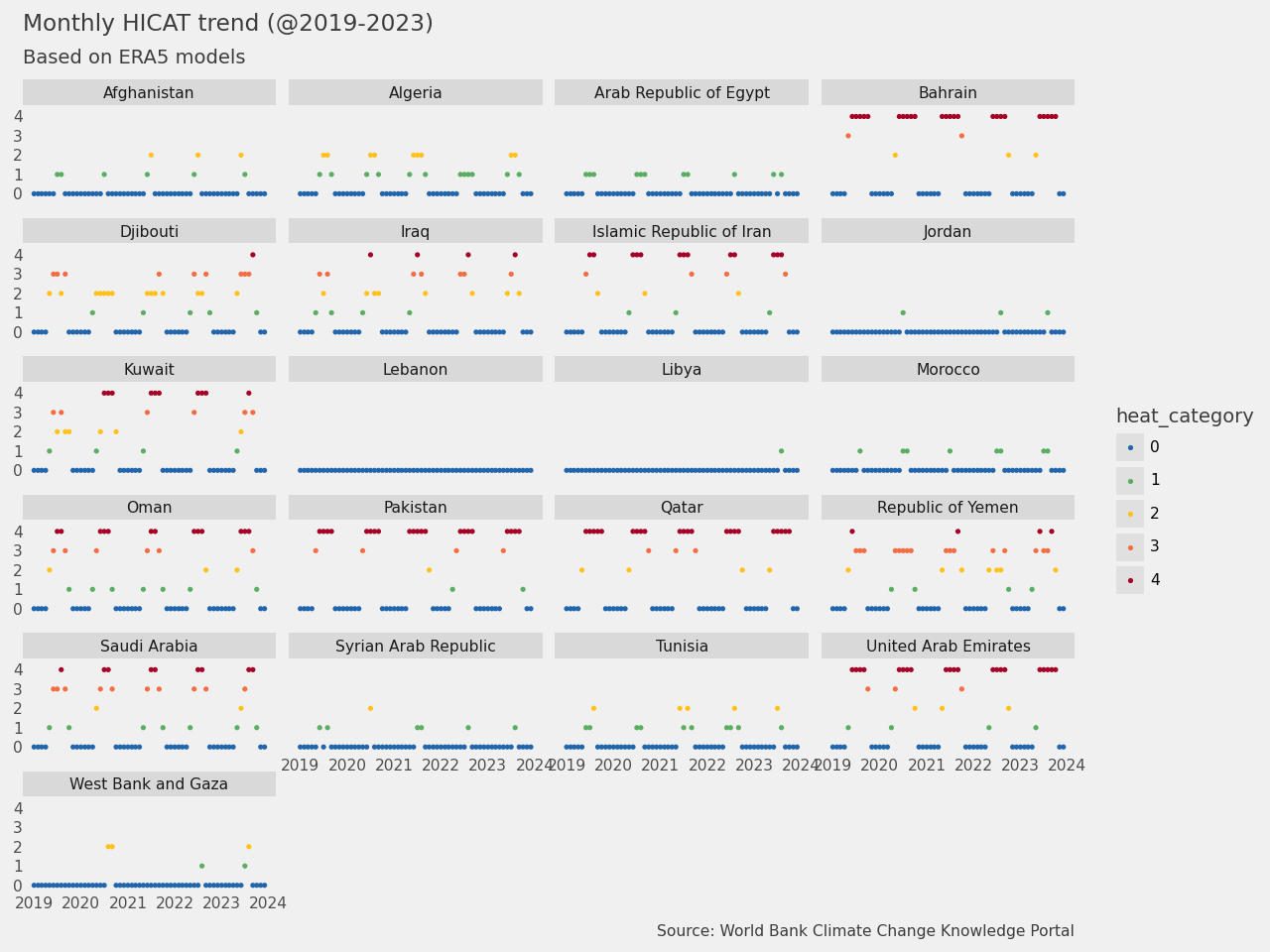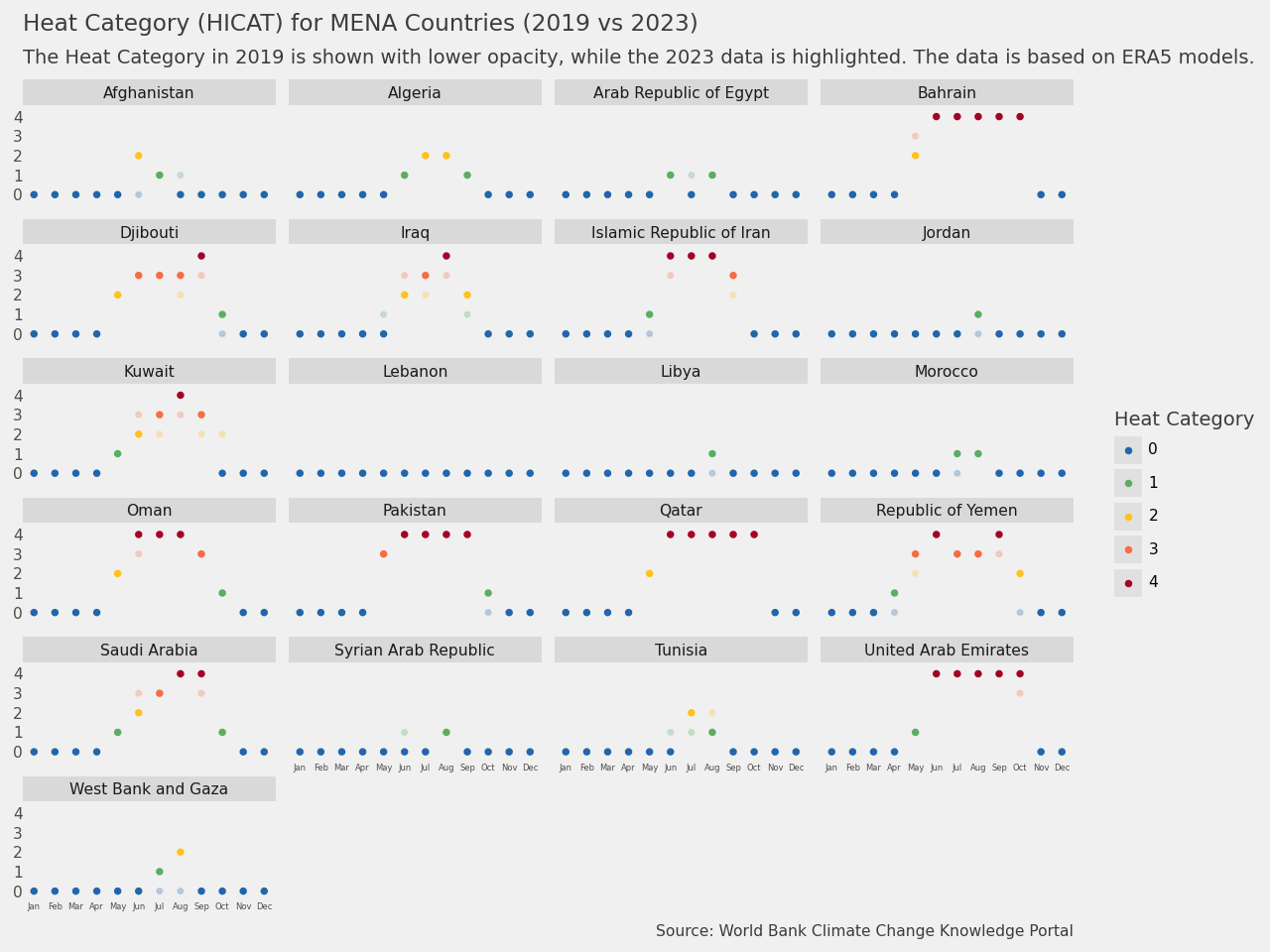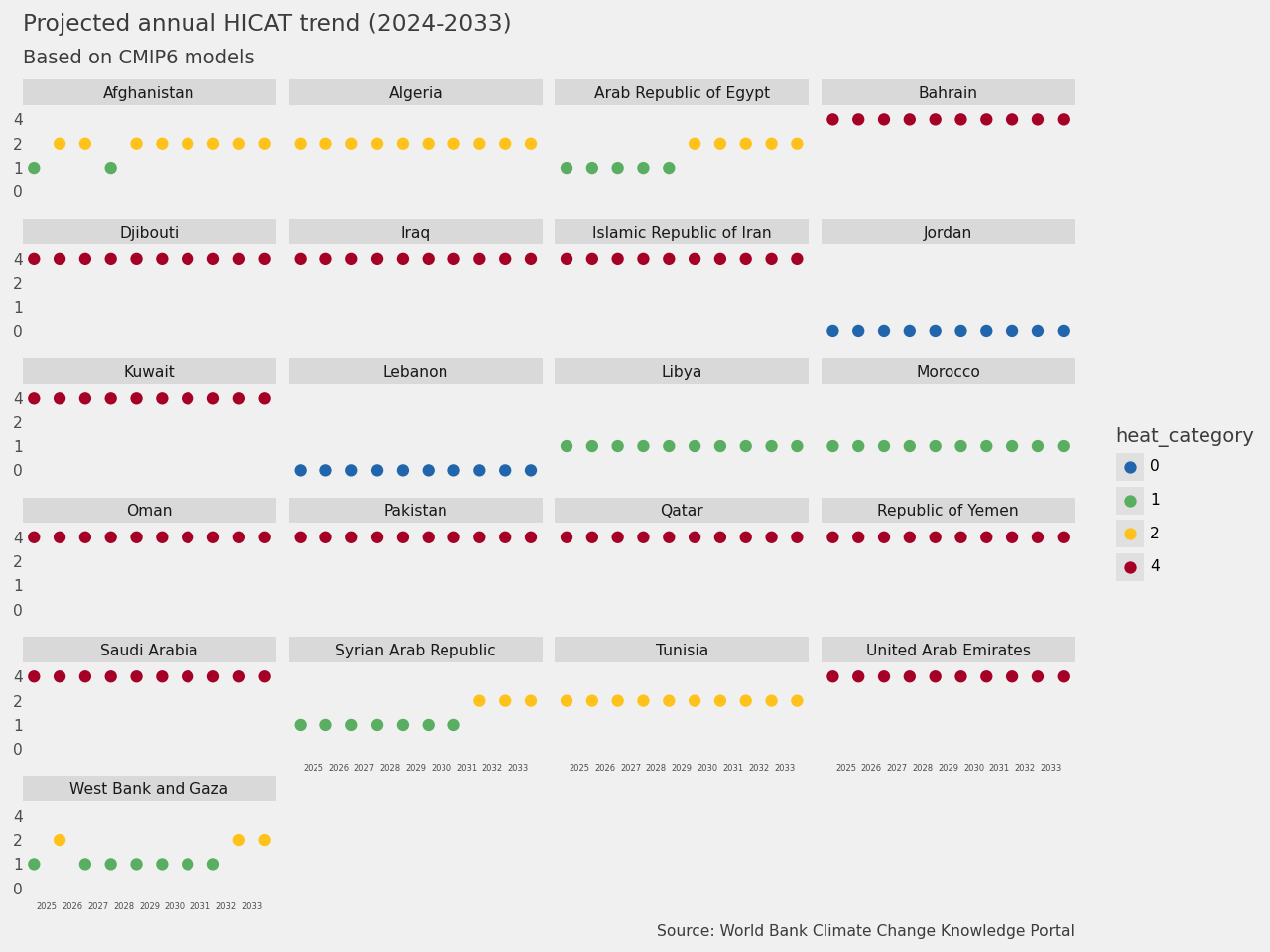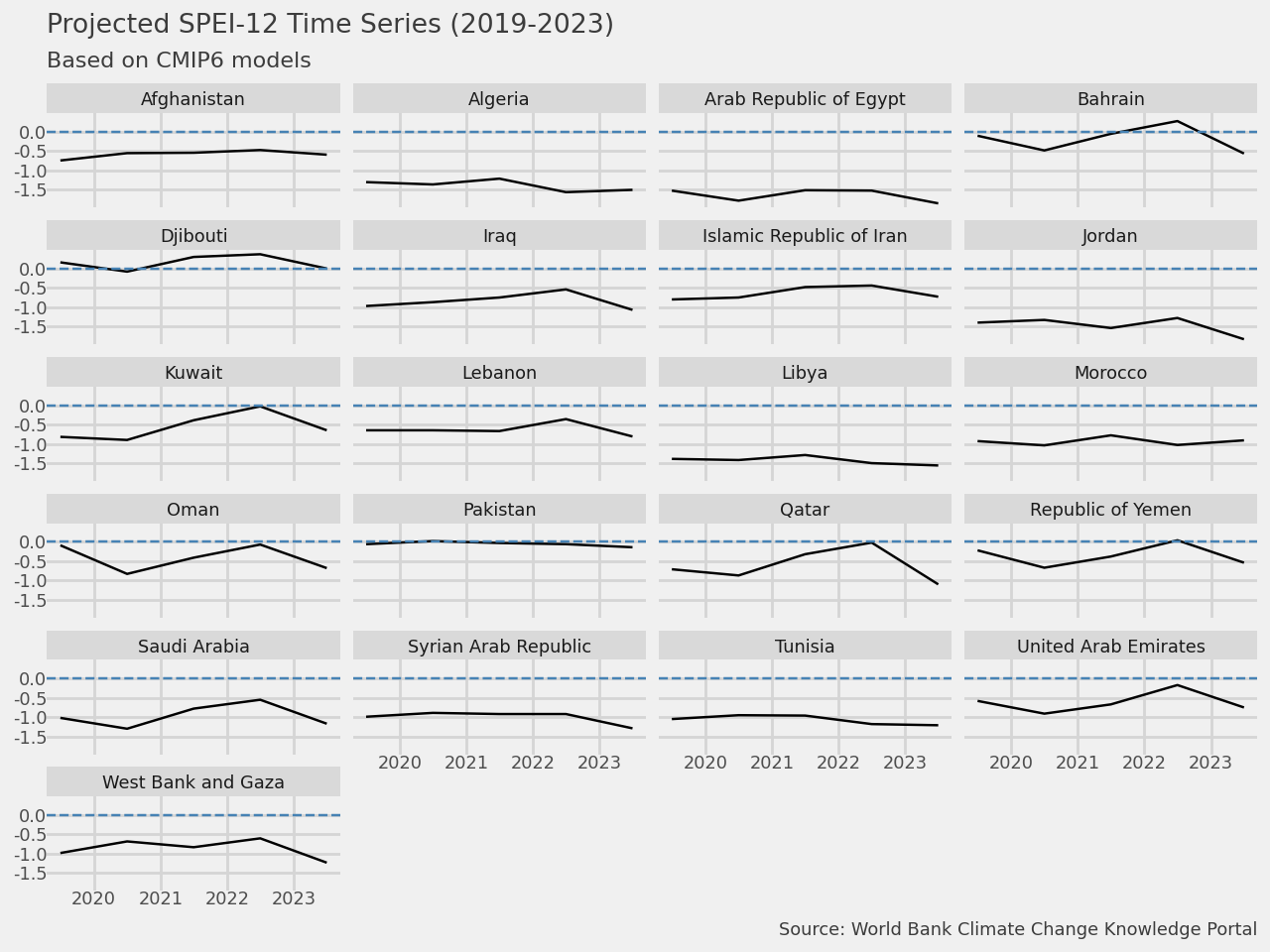Climate risk analysis on MENAAP region#
This notebook provides an overview of the climate risk analysis for the MENAAP region. The analysis includes several indicators, such as the Heat Index (HICAT) and Standardized Precipitation-Evapotranspiration Index (SPEI-12) from the World Bank Climate Change Knowledge Portal to asess the overall climate risk in the region.
The data provided from the World Bank Climate Change Knowledge Portal is spatially aggregated at the country and subnational levels. We used data from two different models: The CMIP6 0.25-degree collection and the ERA5 0.25-degree collections. The CMIP6 data provides a projections of future climate conditions from 2015-2100 under different Shared Socioeconomic Pathways (SSPs), while the ERA5 data provides historical observational climate data from 1950-2023. For the CMIP6 data, we used the SSP2-4.5 scenario, which represents a moderate emissions pathway to illustrate what the future climate could look if we follow the historic trend without any mitigation efforts.
Heat Index Heat Risk Categorization (HICAT)#
Heat Index Heat Risk Categorization, or HICAT, refers to categorization of the occurrence of days above four thresholds for designated Heat Risk Variable. Heat Index Risk Categorization includes, heat index: 35°C, 37°C, 39°C, and 41°C. If at least 0.5 day surpassed the highest threshold, then the highest category is given, reflecting that “at minimum one day of the year experienced the highest heat level”. Risk Factor Categorization: 0-4 represents Low - Extreme Risk.
The The Heat Index itself is a measure of apparent temperature that includes the influence of atmospheric moisture. High temperatures with high moisture lead to high Heat Index.
The figure below shows the monthly HICAT values from 2019 to 2023. Some of the countries, such as Bahrain, Pakistan, Qatar, and United Arab Emirates, experienced extreme heat risk during the summer months, with HICAT values reaching 4 (Extreme Risk) in July and August. Other countries, such as Jordan, Lebanon, Libya, and Morocco, do not experience extreme heat risk, with HICAT values remaining at 0 (Low Risk) throughout the year.
Compared to 2019, the figure below illustrates a significant shift: Some of the countries that previously did not experience extreme heat risk during summer months, encountered such risks in 2023.
If we turn to climate projection under conditions that we assume the CO2 emissions remain around current levels until the middle of the century, we can see that the heat risk in the MENAAP region is expected to increase or continue to experience extreme heat risk in the future. The figure below shows the projected annual HICAT values from 2024 to 2033. The projected HICAT values show that the heat risk in the MENAAP region is expected to increase in the future, with some countries, such as Egypt, Syria, and West Bank and Gaza shows an increase in heat risk from 2024 to 2033. Countries that experienced extreme heat risk in the past, such as Bahrain, Pakistan, Qatar, and United Arab Emirates, are expected to continue experiencing extreme heat risk in the future.
The projected monthly aggregated HICAT values during the 2011-2021 and 2024-2033 periods are in agreement with the historical monthly data, indicating that the heat risk in the MENAAP region is expected to increase in the future.
The figure below shows a choropleth map of the mean historical HICAT values from 2022 to 2023.
The figure below shows the bivariate choropleth map of the mean historical HICAT values and number of conflict events in the MENAAP region.
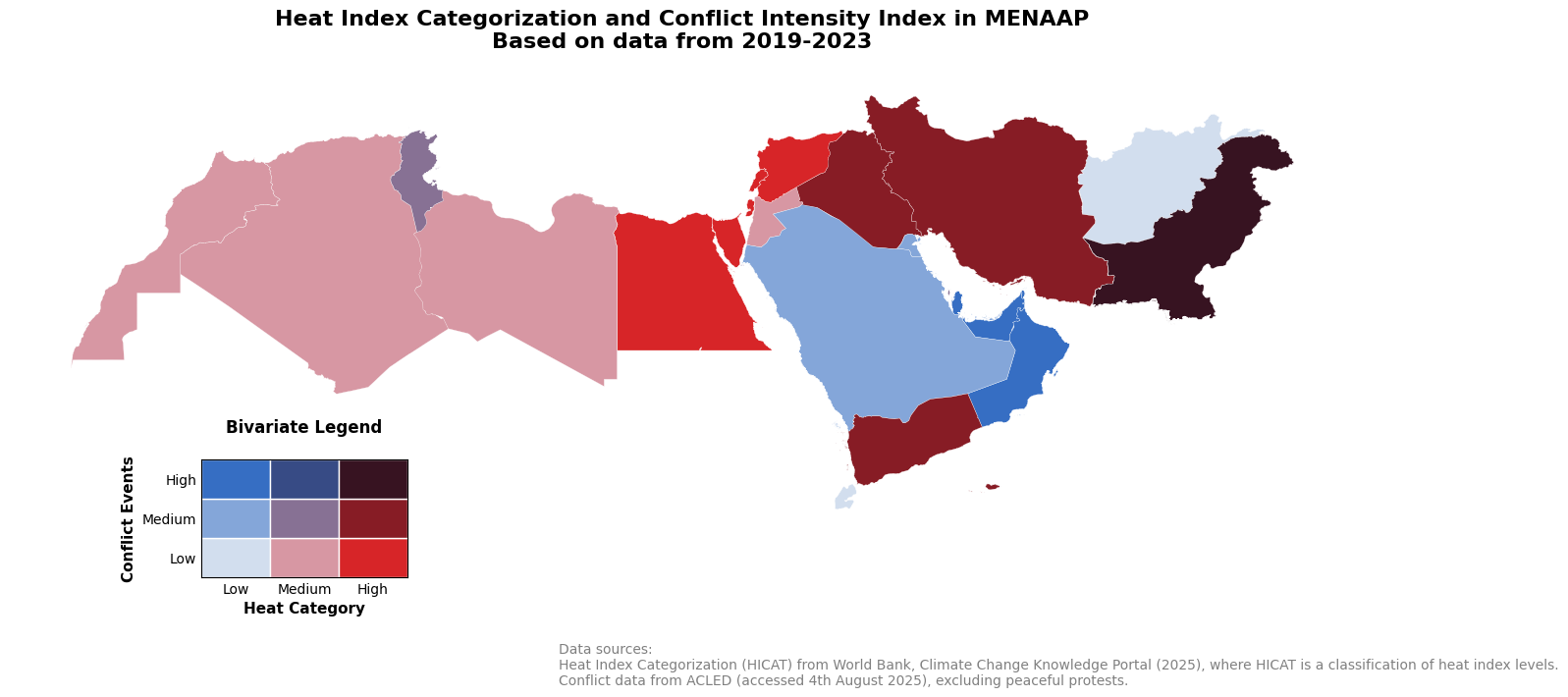
SPEI12#
SPEI12, or Standardized Precipitation Evapotranspiration Index for 12 months, is a drought index that quantifies the water balance in a region by considering both precipitation and evapotranspiration. It is particularly useful for assessing drought conditions and water availability over a longer time frame, such as a year. A negative SPEI12 value indicates drier than normal conditions, while a positive value indicates wetter than normal conditions. The values can be interpreted as follows:
SPEI12 Value |
Condition |
|---|---|
2 |
Extremely wet |
1.5 |
Very wet |
1 |
Moderately wet |
0 |
Normal |
-1 |
Moderately dry |
-1.5 |
Very dry |
-2 |
Extremely dry |
The figure below shows the projected time series of SPEI12 values for the MENA region from 2019 to 2023. Only a handful of countries, such as Bahrain, Djibouti, and Pakistan, have its SPEI12 values fluctuating within the normal range, while most countries have its SPEI12 values fluctuating within the moderately dry range.
The choropleth map below visualizes the mean SPEI12 values for the MENA region during the period of 2019-2023.

